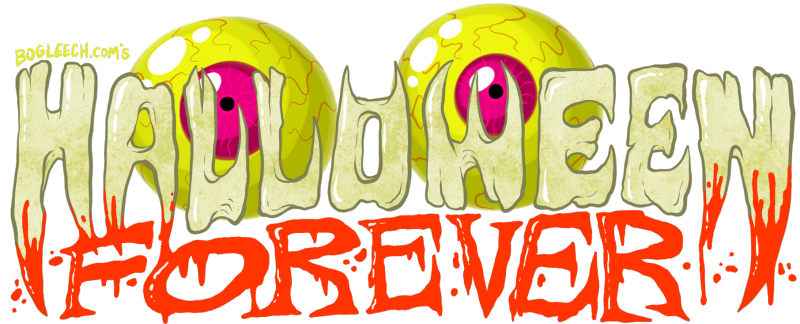
Written by Jonathan Wojcik
HALLOWEEN UNDERWATER.
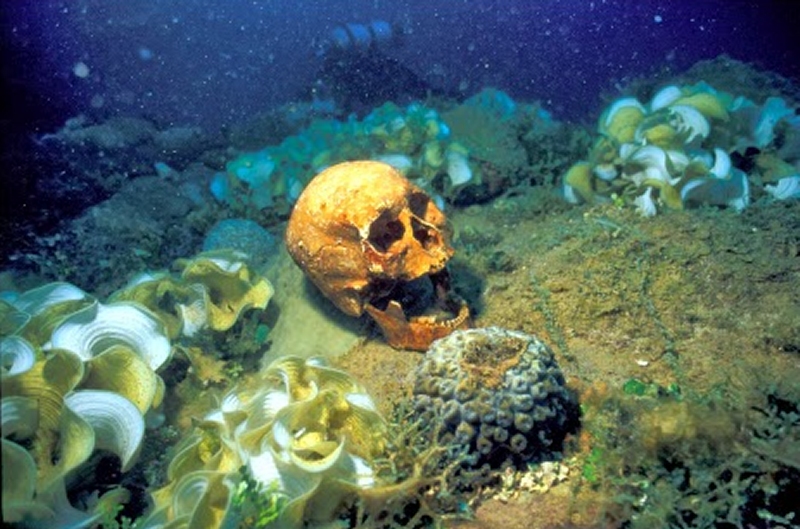
Yes, this is going to be exactly what it sounds like. Maybe you think I must be running low on ideas for Halloween content, but I can promise you that simply isn't humanly possible. No, I
choose to write about Halloween underwater. I've even thought about it
more than once in my life, even though it was all those fish skeletons this year that really pushed me to finally write about it, not to mention the fact that today, the third wednesday of October, is
National Hagfish Day. So maybe you're still confused. Maybe you still want to know what I mean, exactly, by Halloween underwater, but I can't really put it a whole lot clearer than that. We're going to talk about what Halloween would be like if it were 200% wetter. Starting with...
THE HALLOWEENIEST
SEA CREATURES
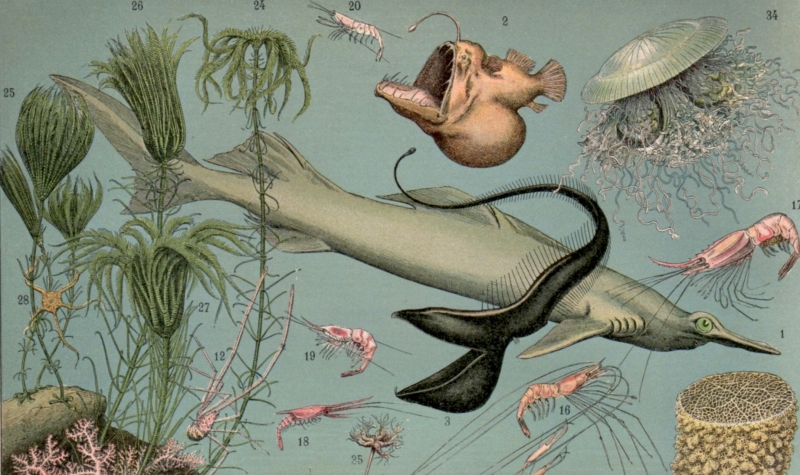
A very, very great deal of sea creatures can be described as at least somewhat scary. Notably, almost every single thing living in the ocean's abyssal zone qualifies as
outrageously eerie to the human mind, but that kind of makes this topic
too easy, doesn't it? Let's pretend for a moment that whoever or whatever is celebrating Hallowmarine, they don't actually have access to the deep sea abyss. Maybe they're mermaids. Maybe this whole article is about Halloween for mermaids and mermaids simply did not evolve for excursions into the crushing pressures of the Marianis trench. Therefore, while they are aware that the ocean continues deep down into unknown blackness, they can't go there and they don't know much about what lives there until it comes to them.
We also aren't going to be judging animals on appearances alone. A pelican eel may look fairly nightmarish, to be fair, but ultimately, it's still just another fish-eating-fish, and that's just par for the course wherever you look in Neptune's kingdom. To qualify as a
Halloween sea creature, an animal is going to need more than outrageous looks or predatory habits.
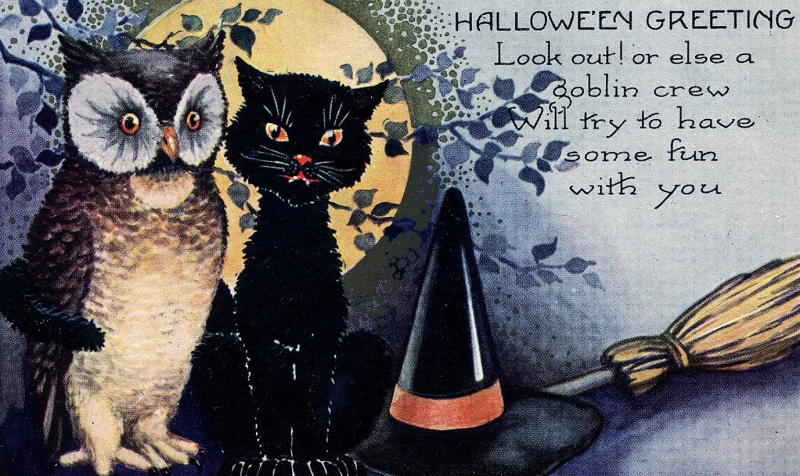
Our traditional, terrestrial Halloween recognizes seven major animals as icons of the season: bats, spiders, black cats, owls, rats, vultures, and ravens. A sort of second tier includes toads, snakes, flies and cockroaches, not as common but certainly a presence, and you would think wolves might fit into that equation, but they're almost always represented by
werewolves, so we're not going to count those in with the "animals." What do all the "core" Halloween fauna have in common? They're not the most dangerous or even the most alien-looking wildlife we're familiar with, by any stretch, but some are rightfully associated with death, some are ominous, nocturnal creatures, some are reviled pests, and some are simply surrounded with superstition.
To find the
perfect Halloween creatures in the briny deep, we have to think about what animals might possibly trigger those same feelings of dread, those same misunderstandings or supernatural exaggerations, but
from a nautical perspective.
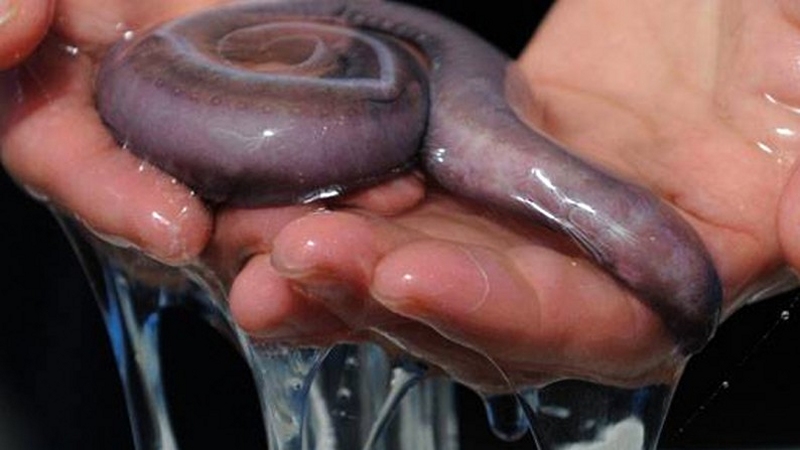
The Obligatory Slime Hags
Obviously, hagfish would be Halloween's star zoological attraction beneath the waves, so let's get them out of the way. Though they're quite common in the abyss, these ancient creatures are not confined to it, and though they also prey on small invertebrates, they're best known for boring their way in and out of rotting corpses. Their defensive slime even helps them lube up as they slip in and out of a putrid seal's eye socket or a rancid tuna's anus, and their very skin surface has amazingly evolved to soak up nutrients while they wallow in the entrails of a sunken carcass. Lots and lots of things in the ocean will scavenge - from crabs to fish to sea stars - but it's the hagfish that makes subsurface carrion eating into an art form, and in the process, spew more mucus than anything else in the animal kingdom.
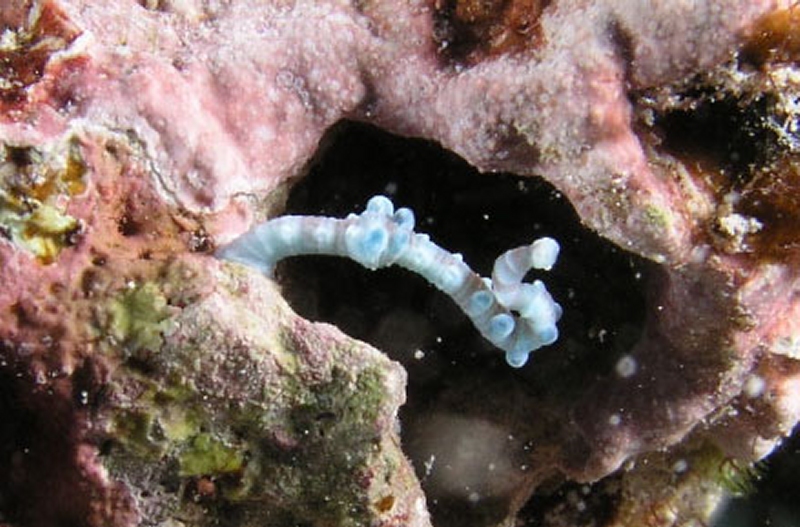
The Marine Leeches (photo: Duck Lundholm)
I'm getting all the obvious ones out of the way first. Blood-sucking leeches are as much a problem for animals in saltwater ecosystems as freshwater ponds and streams, but to most creatures, only an irritation at worst. Like many marine animals, they tend to get a whole lot more colorful than they do on land, and you'll also notice this one is a lot
knobblier. The marine species can have all sorts of protruberances and pustulations, allowing them to blend in with sponges and corals while they wait for an unsuspecting host to swim within reach. Sometimes anchoring one end of themselves in place and curling up like a question mark, some marine leeches can almost be mistaken for a
seahorse. A coincidence, probably, but an unnerving one if it catches you off guard.
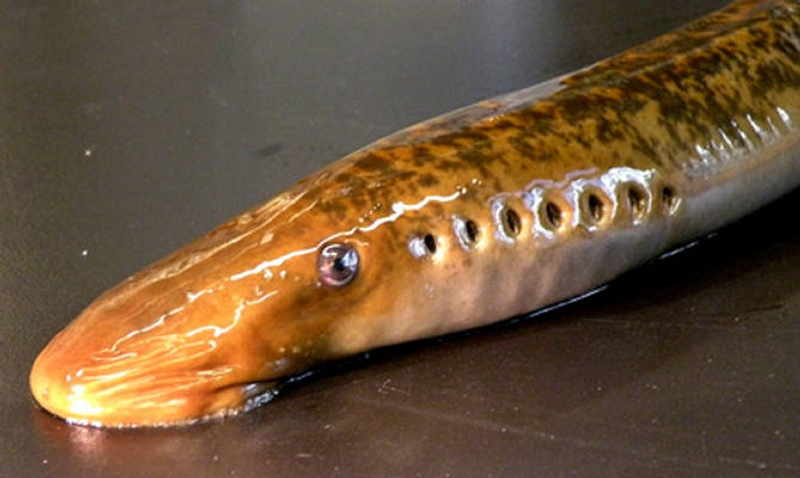
The Sea Lampreys
Like I said, obvious ones first. Lampreys are the only extant animals directly related to the hagfish, and in popular culture, we tend to confuse many aspects of them with leeches. It's understandable, since both are elongated, aquatic vampires with sucker-shaped mouths, but whereas a leech makes a nearly microscopic incision and bloats on the host's blood like a living syringe, a lamprey uses its hundreds of teeth to rasp a nasty hole in its victim's side and guzzle up whatever blood, fluids and even tissues leak out. Fortunately, they tend to attack only cold-blooded scaly fish, but even if our mer-people are lamprey-proof (at least from the waist up?) it has to be fairly disturbing to see these eel-like creaturing hanging from other animals, steadily weakening and finally dying from continuous blood loss. Spookier still, sea lampreys mature in fresh water streams before invading the open ocean and finally returning to their old spawning grounds, which isn't unheard of for other marine organisms, no, but when we're talking about slimy, prehistoric vampires, it certainly adds an extra layer of mystique.
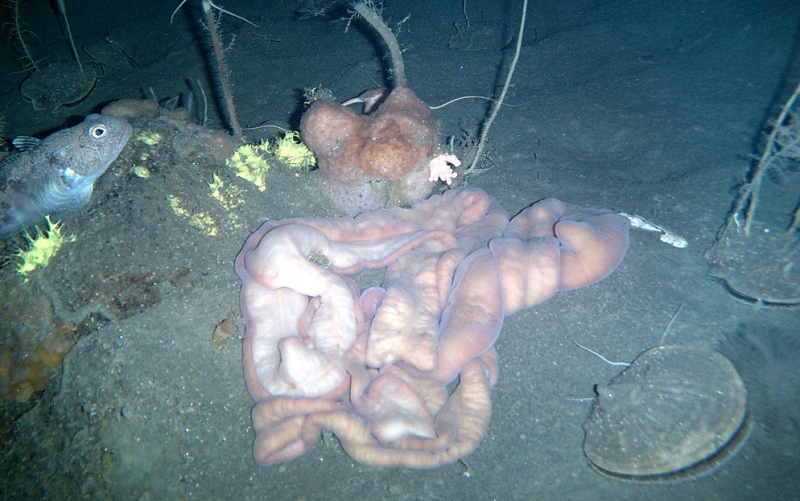
The Proboscis Worms
Here we see the nemertean worm,
Parborlasia corrugatus, doing its best impression of rancid intestines coiled up on the sea floor. Growing up to six feet in length, this particular nemertean has been recorded at depths as extreme as almost 4,000 metres below the sea's surface and as eerily close to home as the interdinal zones along chilly, arctic shorelines. Both a predator and scavenger, it can fire a barbed, adhesive proboscis from its head end to spear small creatures or dig in to carrion, and when disturbed, secretes a mucus
too acidic for most predators to stomach, an experience probably not dissimilar to getting a mouthful of fresh bile.
The best part of this noxious, disembodied heap of entrails is that it's not alone. The oceans are home to innumerable other proboscis worms, some small, harmless and even beautifully colored, while many others share corrugatus's ghoulish good looks and appetite for flesh. The species
Lineus longissimus, found on muddy shores and tide pools, can reach lengths of over
ninety feet, albeit no thicker than a human finger, and secretes a foul-smelling mucus packed with potentially lethal concentrations of neurotoxin. Other nemerteans have even made headline news for their alien appearance, like the one with the
branching proboscis, or the one that looks like a river
vivid green phlegm (video warrants a NONSENSICALLY LOUD-ASS MUSIC WARNING).
As prone to oozing around the dead as the slime hags and equipped with such unappetizing defense mechanisms, nemerteans - particularly the larger varieties - would probably overshadow even the marine leeches, fanged bobbit worms and other segmented annelids as the creepiest, crawliest of the sea's vermiform invertebrates.
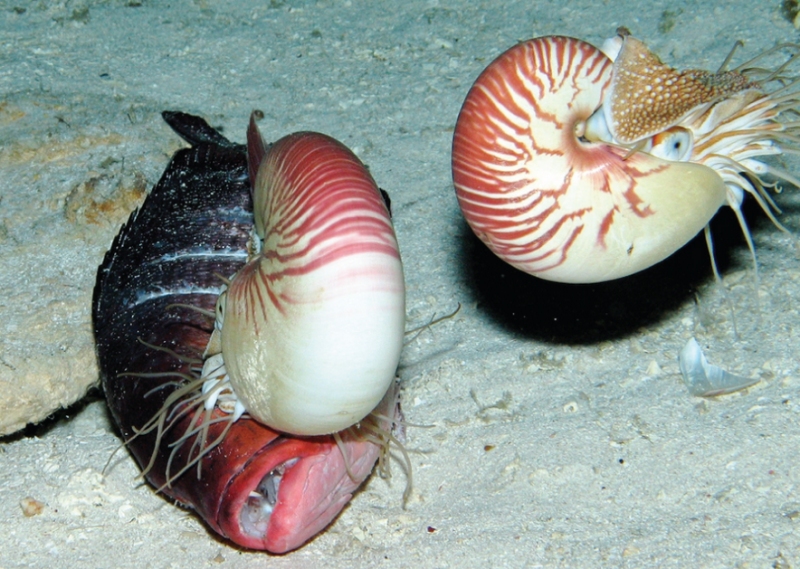
The Chambered Nautilus source
So, how about cephalopods? Squids, octopuses and cuttlefish are so wide-spread in the ocean that maybe our hypothetical aquatic civilization would find them too "normal" to be scary, but then there's the
nautilus, a mollusk resembling no other living animal in the modern world. It has
dozens of thin, worm-like tentacles, emotionless eyes, and drifts eerily through the water with no apparent "swimming" mechanics, feeding on small crustaceans and worms or even dead or dying vertebrates. It was once widely believed that these animals remained in the depths during the day and ascended every night, like clockwork, but we now know they rise and sink in more complex, less predictable patterns, mainly just favoring dark, cold conditions.
As a Halloween creature, a nautilus may not have a strong "creepy crawly" vibe and might even be regarded as fairly beautiful by traditionalist standards, but the same can be said of ravens and black cats, and ss an enigmatic, reclusive creature of the night, it almost works as a marine counterpart to an
owl. When a little mer-person gets lost in a haunted reef after dark, it could very well be the pale, soulless stare of a hovering nautilus that sets the mood.
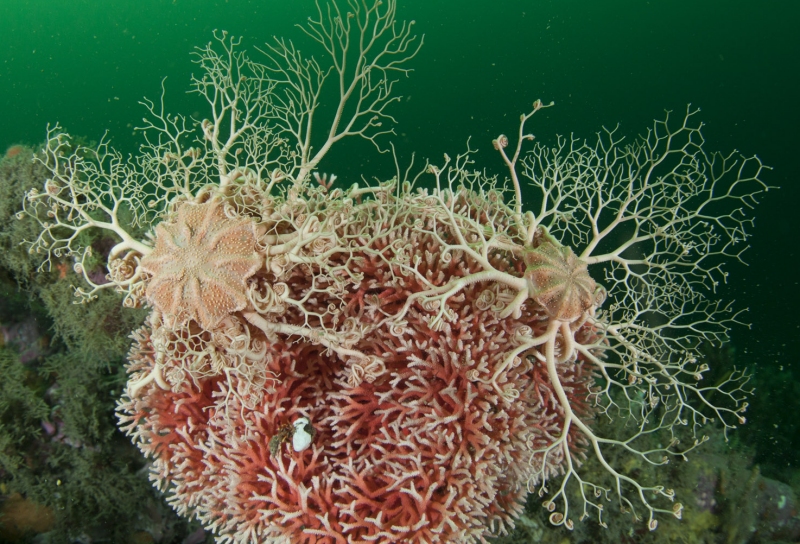
The Basket Stars (source)
It wouldn't be right to leave out the Echinoderms, but of all the weird urchins, stars and cucumbers out there, none are as haunting as the
Gorgonocephalids, or "basket stars," resembling little more than clusters of writhing, bone-white tree branches. While commonly thought of as abyssal animals, these creatures can sometimes be found in intertidal environments, though only wherever they can find a fairly strong and constant current. That's because the basket star hunts like a living spider's web, spreading its hundreds of barbed, squirming tendrils where it knows small prey are most likely to blunder into its grasp. I actually feel like brittle stars in general would occupy a Halloween niche very similar to spiders; they can't normally hurt you, but they've got long, wriggly, spindly, spiny limbs that would probably freak someone right out if they got in their hair, and like spiders, they're positively
everywhere in the coral reef, scuttling around every nook and cranny, preying on smaller, less agile invertebrates or even fairly active fish.
If brittle stars are the sea's spiders, then basket stars would be the sea's tarantulas - larger, more exotic, and widely regarded as the scariest despite only posing a threat to small bugs.
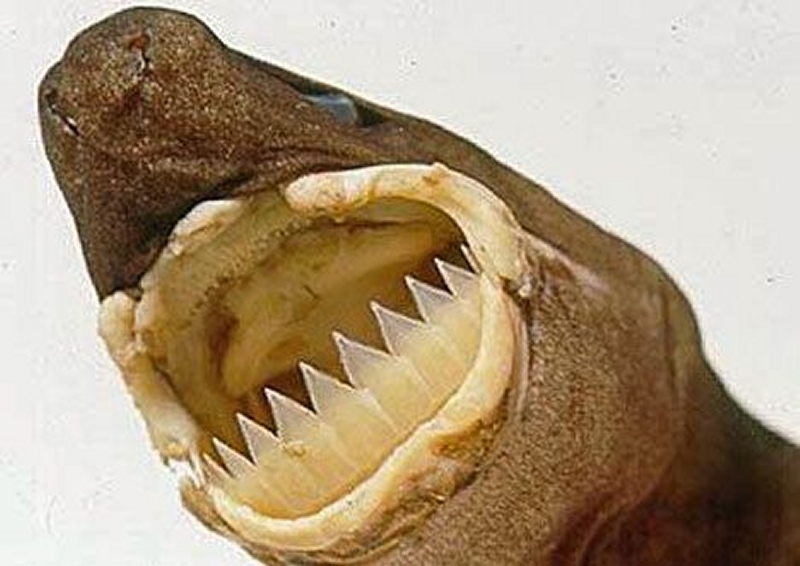
The Cookie-Cutter Shark
Up to now, my picks, like the Halloween creatures of the land, haven't been too dangerous. Not unless you tried to eat a neurotoxic worm, anyway. Say, however, you're out for a swim one night, not a hammerhead or orca whale as far as the eye can see, when you suddenly feel a sharp, stabbing pain in your side, and find yourself in a cloud of your own blood. The culprit is already gone, but you'll carry the tell-tale, circular scar for the rest of your mer-life.
You've just been attacked by a cookie cutter shark, an animal you actually have pretty valid reason to find skin-crawling.
These tiny sharks might seem cute to those of us safely on land, but there's virtually nothing swimming the sea that they can't terrorize. Not only will they devour smaller creatures whole, but they'll fearlessly attack larger fish, seals, porpoises, other sharks, whales, submarines and at least one known human with their suctorial lips and specialized "scooping" teeth, sneaking up on the victim and making off with a perfectly circular nugget of flesh. Sticking to darkness, they tend to haunt extreme depths during the day, rising to surface waters as the sun sets, sometimes even in
schools, the underwater equivalent to a flock of vampire bats taking to the twilight sky, though vampire bats don't usually leave giant, gaping holes in anyone's stomach.
The best part is, these sharks also
glow when they want to, which is believed to either attract unsuspecting victims or confuse potential predators. To mer-people, these shining, miniature flesh-snatchers would probably seem like imps straight from the underworld.
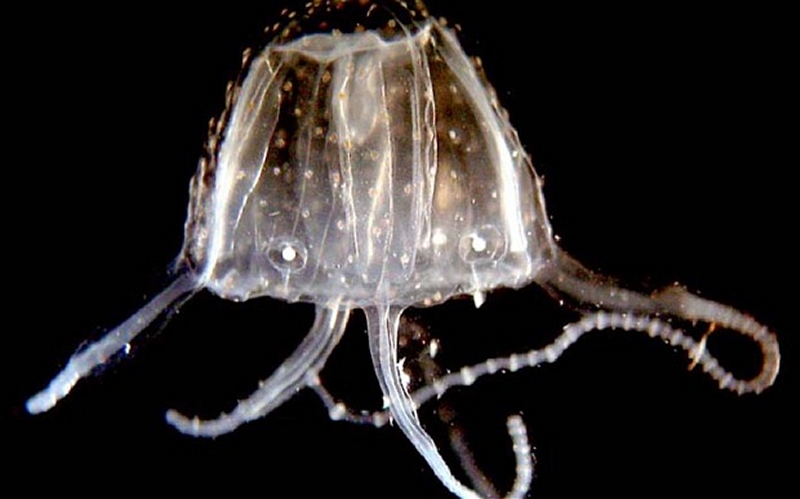
The Box Jellies
Our most dangerous entry of all, I almost didn't even include jellyfish of any sort in this list. They're ghostly, slimy and venomous, yes, but I felt as though they might be another creature so commonplace in the ocean that they wouldn't set off any spooky, uncanny, abnormal alarm bells like more cryptic or parasitic creatures. I finally relented when it came to the
cubozoa, however, the "box jellies" which include the dreaded
Irukandji jellyfish. If merely being venomous were enough to qualify for this list it would quickly turn into a laundry list of toxic terrors, but the box jellies feel like an extra-special case, as their hellishly agonizing, potentially lethal stings are contrasted by an incredibly minute size and near invisibility in the surrounding water, as if an intangible phantasm simply drifted by, reached out with a single gelatinous finger and tore out a piece of your soul.
What makes the box jellies especially unusual compared to most other cnidaria is the presence of functional, sophisticated
eyes, which you can clearly see in this photograph. This is a jellyfish actually
glaring at us, and it has one of these ocular clusters at every corner of its roughly square-shaped body. Unlike the blind and relatively directionless medusozoa, these ectoplasmic killers aren't limited to aimless undulation as they wander the currents, but swim and navigate with purpose around obstacles in search of sustenance. They're quarter-sized, unseen wraiths with a death touch, and they're
watching you.
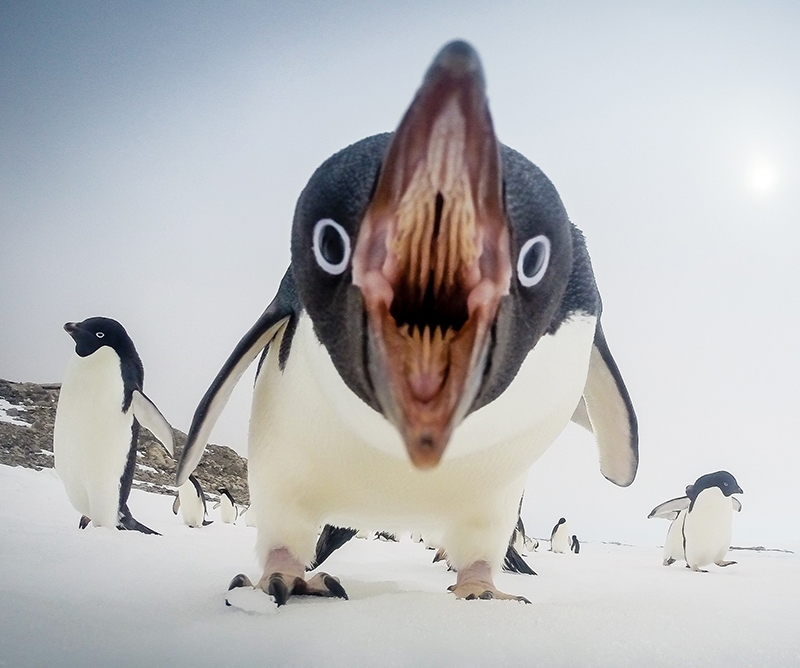
PENGUINS
No, really. This isn't a joke entry. Let's think about what penguins - and to a lesser extent, other diving sea birds - represent to the things that live underwater. Preying on fish is no big deal, really, the entire ocean is kind of eat-or-be-eaten, but
birds? Birds that use their wings to
swim at breakneck speeds? These are creatures of the dreaded
dry land, who burst their way through the shimmering barrier between realms in a Hitchcockian flurry of violence before returning to their mysterious, hellish air-world. Even the larger, more menacing seals and sea lions wouldn't seem quite as unnatural; whales have long normalized the presence of mammalia throughout the deep, but penguins are among the only
avian fauna more at home hunting completely beneath the waves than above. It's like if some sort of weird tuna evolved to fly for a few minutes at a time, and they just erupted out of the water en masse to devour pigeons and chipmunks every so many hours.
Like dolphins, even the wholesome, adorable image penguins seem to have from "our" perspective is a big, fat lie, at the very least where the tiny, chubby and beloved
Adelie penguins are concerned. Just ask
George Murray Levick of the 1910 Scott Antarctic Expedition, who found the bird's "sexual depravity" to be almost too repulsive to share with the public.
I feel like this is actually a good enough cut-off point for now. Now that we've covered the animal mascots of mermaid spooksmas, the natural next step is to talk
Halloween sea monsters, and I may or may not try to find the time to
draw those when the time comes.
MORE HALLOWEEN FEATURES:
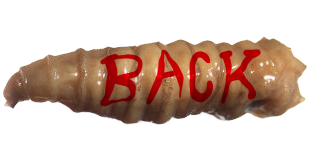
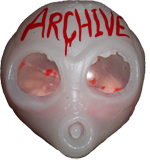
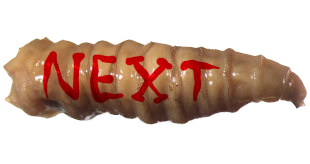

Florida
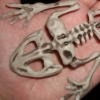
Michaels
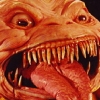
Ghostbusters
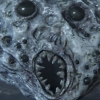
Bloodborne

Cracker Barrel
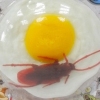
THOSE TRICK

Yokai Watch

RGB

Yuumajuu
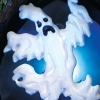
Spookytown
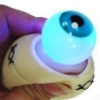
Alibaba

Madoka Whatevz
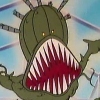
RGB2
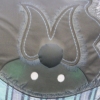
Hobby Lobby
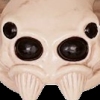
Crazy Bonez

Lego 2015
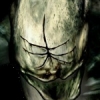
Silent Hill

Menard's
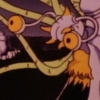
RGB3
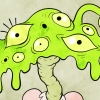
?????
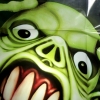
$13 Haul
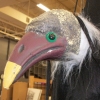
World Market
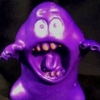
Alibaba II
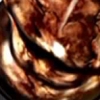
Silent Hill II

Homunculus II

RGB IV

Shadow Hearts
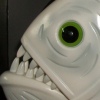
Skelefish

Bioshock
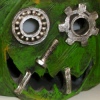
Gordmans

Watch stuff!

Homunculus III

RGBV

Silent Hill 3

Steven Universe

Alibaba III

Wal Mart

swing
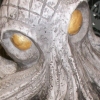
Target
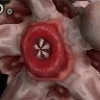
Shearts II
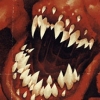
31 Movies I!

Homunculus IV
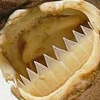
Underwater
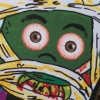
Treasures


















